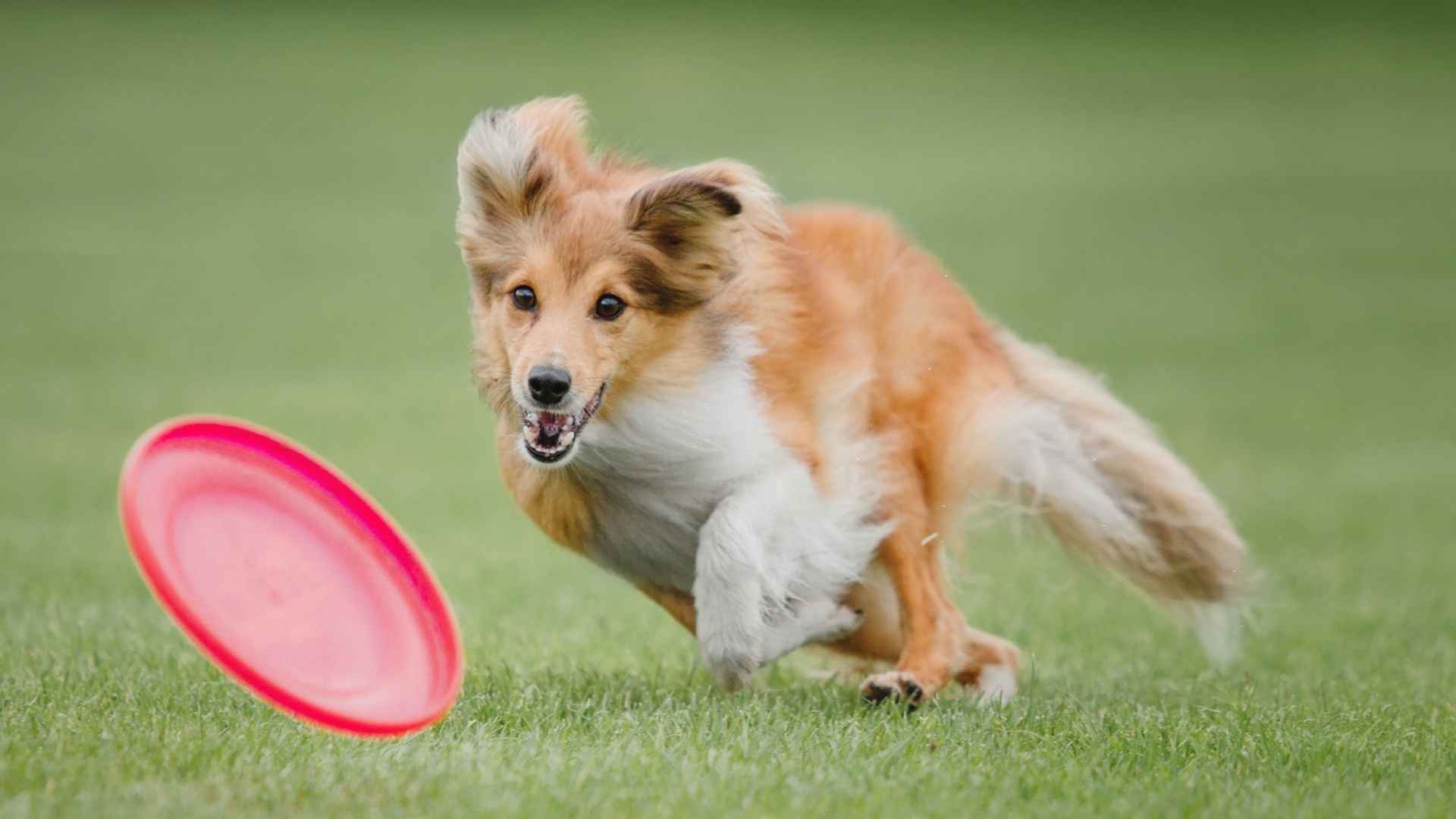Before the whistle blows or the trail unfolds, some dogs are already born champions — bred not just for companionship, but for speed, stamina, and an insatiable drive to move. These aren’t your average couch cuddle buddies. These are the titans of the sporting world, dogs with hearts that race as fast as their feet. From splashing through icy lakes in pursuit of waterfowl to darting through dense underbrush after game, these canine athletes have been at our side for centuries, not as ornaments, but as partners in action.
They’re wired for the chase, built for endurance, and fueled by an unshakable bond with their humans. But don’t mistake their intensity for inaccessibility — these dogs are just as joyful in a family backyard as they are in the field, as long as there’s room to run and a job to do.
What sets these breeds apart isn’t just their agility or instinct, but their enthusiasm — an almost contagious zest for life that can turn a simple walk into an adventure, and a training session into a victory lap.
Let’s dive into the world of seven of the best active sporting dog breeds, where every tail wag comes with a splash of adrenaline and every bark echoes with the spirit of the wild.
Active Sporting Dog Breeds
1. Labrador Retriever
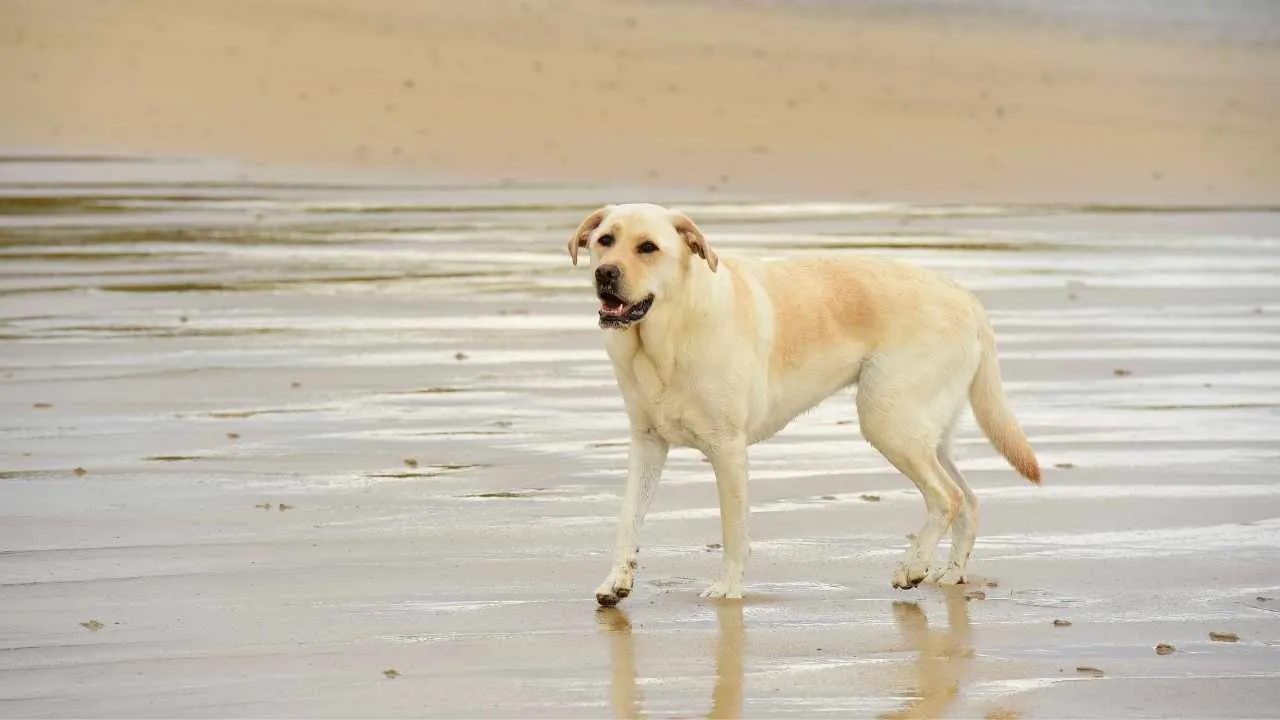
Labrador Retrievers are the gold standard for active sporting dogs—and it’s not just hype. These dogs are athletic machines with a strong, muscular build and a tail that never stops wagging. Their bodies were made to move, and they’ll happily spend hours swimming, hiking, or playing fetch like it’s the best day ever (because for them, it is).
Originally bred in Newfoundland to retrieve fishing nets and haul in game, Labs have always been working dogs at heart. That history gave them their love for water, their strong retrieving instincts, and their “let’s do this” attitude. Even today, they light up the moment they see a lake, a river, or a hose in the backyard.
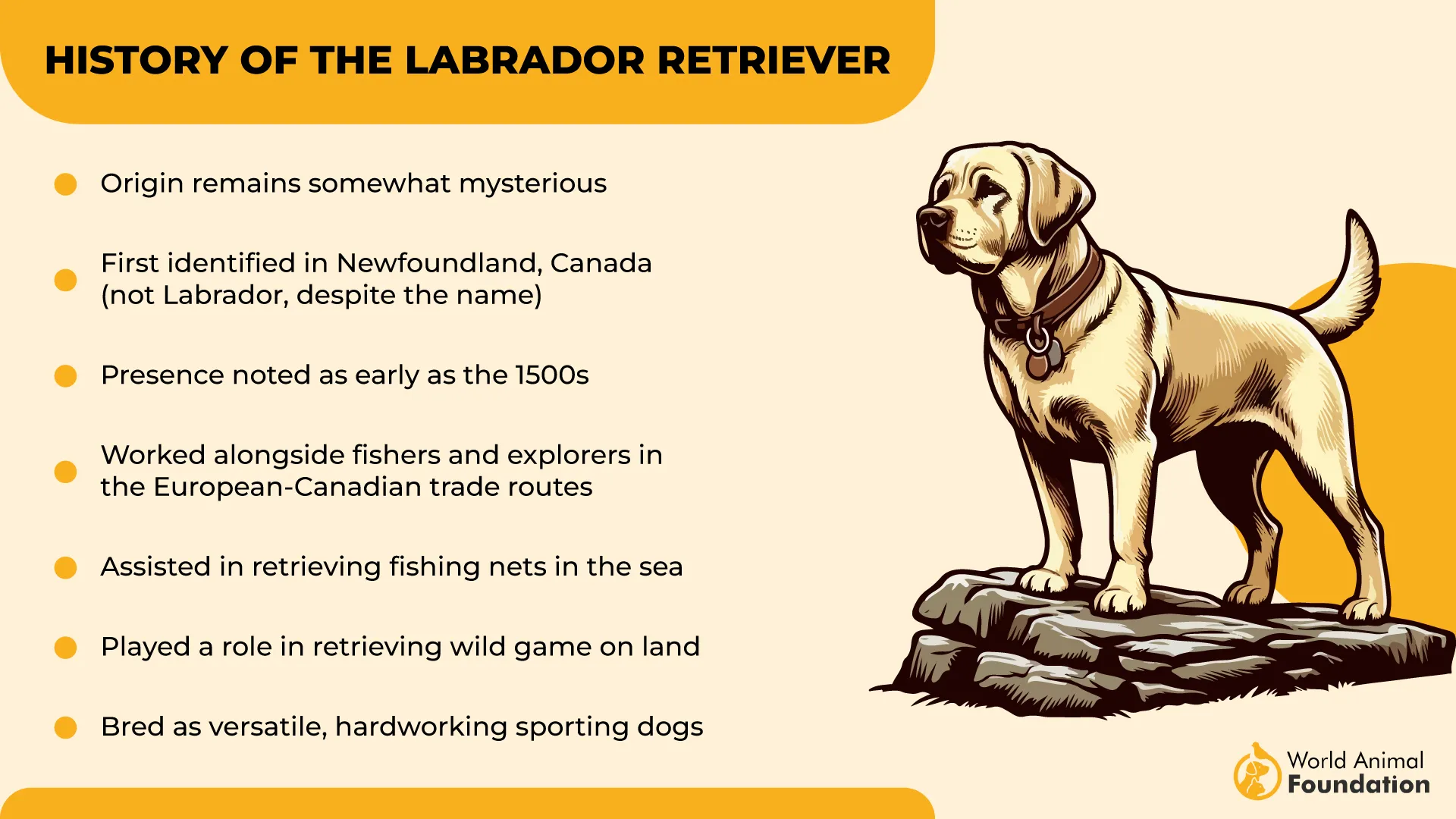
What really sets Labs apart is their endurance. These dogs don’t just sprint—they go the distance. Long trail runs, marathon games of fetch, or back-to-back training sessions? Labs are here for it. They don’t just keep up—they thrive on the challenge.
But don’t let their goofy grins fool you. Labs are focused and determined when it’s time to work. Whether they’re retrieving birds during a hunt or crushing it on an agility course, they bring that all-in energy every single time. It’s part of what makes them so reliable in sporting roles.
One of their best traits? Their versatility, says AKC. Labs can switch gears in a heartbeat—high drive when it counts, and then cool enough to chill with the family once the job’s done. That balance is why they’re trusted in everything from hunting fields to search-and-rescue missions.
Fun Fact:
Labrador Retrievers are so obsessed with water that many will try to swim in puddles, kiddie pools, or even bathtubs—basically anything deeper than two inches!
2. Boykin Spaniel
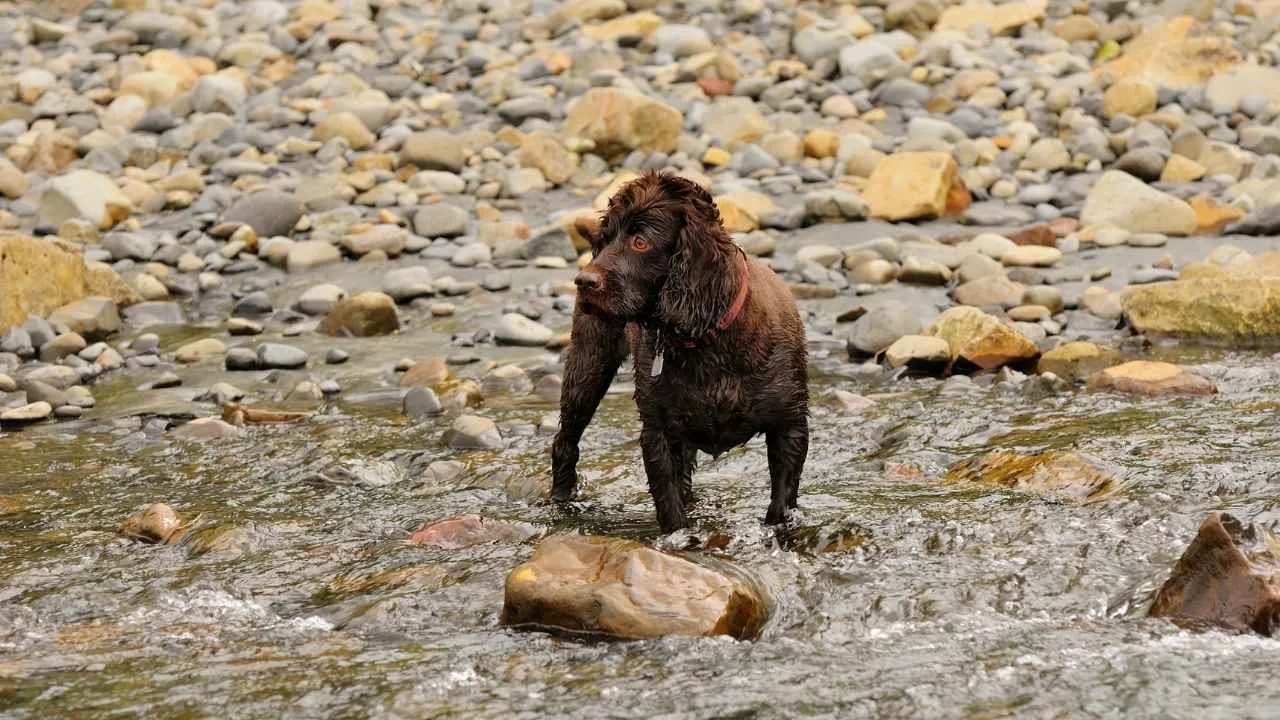
PetMD says that Boykin Spaniels might be medium in size, but actually, they’re total dynamos in the sporting world. Originally bred in South Carolina for turkey and waterfowl hunting, these compact retrievers pack serious drive and agility into a neat little package.
They’ve got that classic spaniel energy: fast, focused, and absolutely obsessed with staying busy. Whether it’s flushing birds in thick cover or charging into the water to retrieve a downed duck, Boykins go hard. They’re fearless in the field and won’t hesitate to dive into swampy terrain if that’s where the action is.
These sporting dogs are known for their incredible nose. Boykins are scent-savvy hunters, often able to track game through dense brush where bigger breeds might struggle. Their compact build actually gives them an edge in tight spots—how cool is that?
They’re also incredibly versatile. These dogs adapt well to different types of hunts, whether it’s upland bird hunting in the woods or retrieving in marshes. They’re like the Swiss Army knife of sporting dogs—small, but insanely useful.
Worried about stamina? Don’t be. Boykins may not look like long-distance athletes, but they’ve got grit. They can spend an entire day in the field without slowing down, making them ideal for hunters who are out from dawn till dusk.
Fun Fact:
Boykin Spaniels are the official state dog of South Carolina, and they even have their own holiday: Boykin Spaniel Day, celebrated every September 1st!
3. Brittany
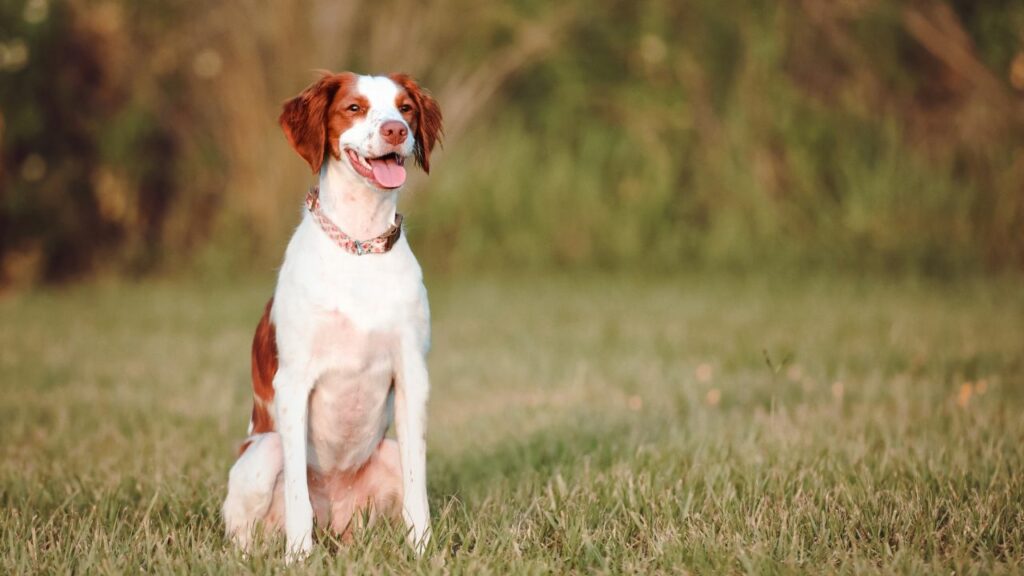
If there were a trophy for “most upbeat hunting partner,” the Brittany would probably take it. These dogs are straight-up firecrackers—lean, athletic, and always tuned in to the action. They’re built more like a pointer than a spaniel, which makes sense, because they do both jobs like pros.
It is their agility that makes them stand out. Brittanys don’t just run—they float. Their movement is smooth and controlled, even across uneven ground. That’s why they’re so popular with foot hunters who need a dog that can keep up without running out of steam.
Think they’re just fast? Nope. Brittanys are thinkers, too. They work with a mix of speed and strategy, sweeping fields in calculated patterns, checking back in with their handler, and adjusting without missing a beat. It’s like they’re reading your mind.
Despite all that drive, Brittanys aren’t stubborn or difficult to train. In fact, they crave structure. Give them clear direction and consistent praise, and they’ll become laser-focused on making you happy. They’re serious team players, not lone wolves.
Their energy level isn’t just for the field—it’s their everyday mode. These dogs need daily activity, both physical and mental. A quick walk around the block won’t cut it. Got trails to run or fields to explore? That’s Brittany’s happy place.
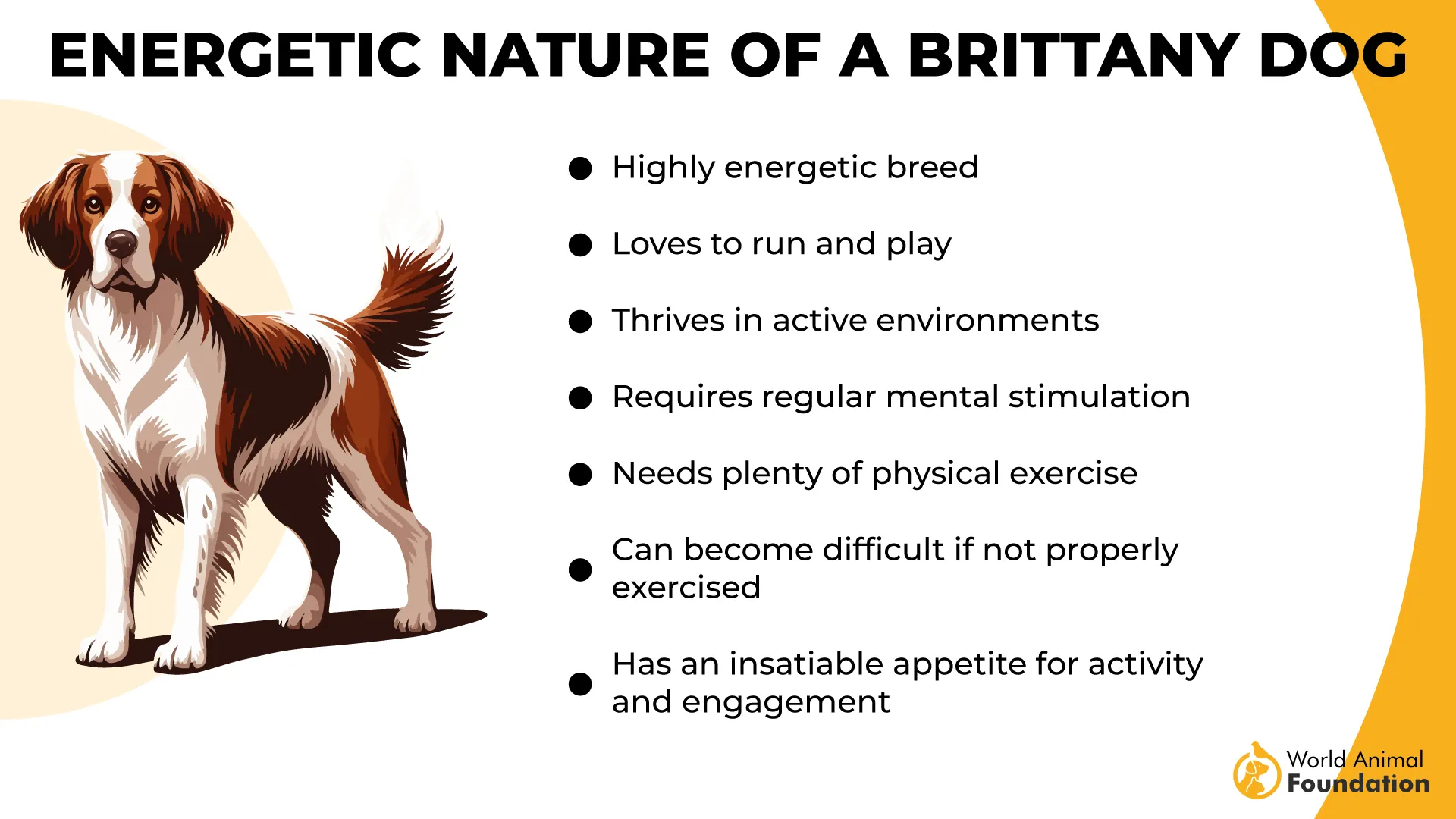
They’re also pretty low maintenance in the grooming department. Their coat is usually soft and flat, says Britannica. They don’t shed as heavily as some other sporting breeds. It’s one less thing to worry about when you’re managing an active lifestyle.
Fun Fact:
Unlike most sporting dogs, Brittanys don’t always need to be taught how to point—it’s a trait they’re born with. Some pups start striking the pose naturally at just 8 weeks old!
4. Flat-Coated Retriever
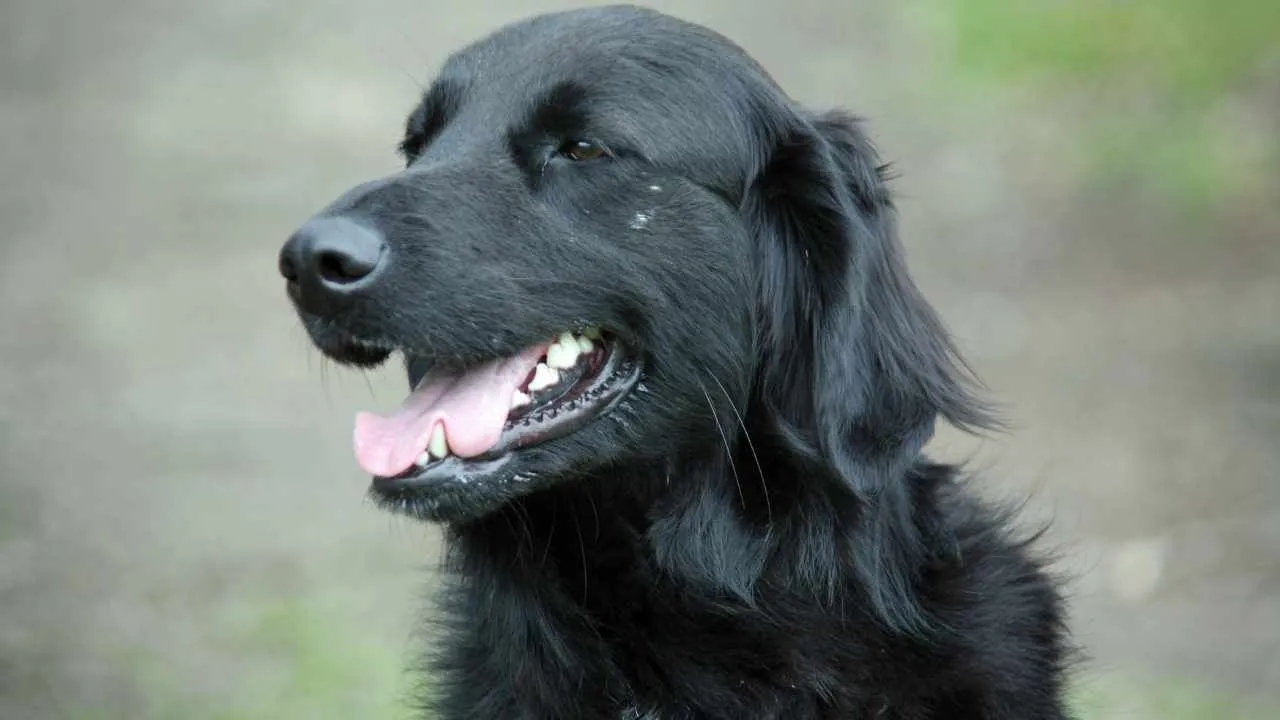
Flat-Coated Retrievers are often called the “Peter Pan” of the dog world—and it’s not just because of their forever-young attitude. These dogs bring a joyful, almost goofy energy into every activity they do, but make no mistake—they’re serious performers when it comes to sporting work.
Developed in the 19th century for retrieving waterfowl and upland game, these retrievers shine in wet, rugged environments. Their dense, water-resistant coat, powerful, and muscular frame make them ideal companions for hunters who work over marshes, lakes, and wetlands.
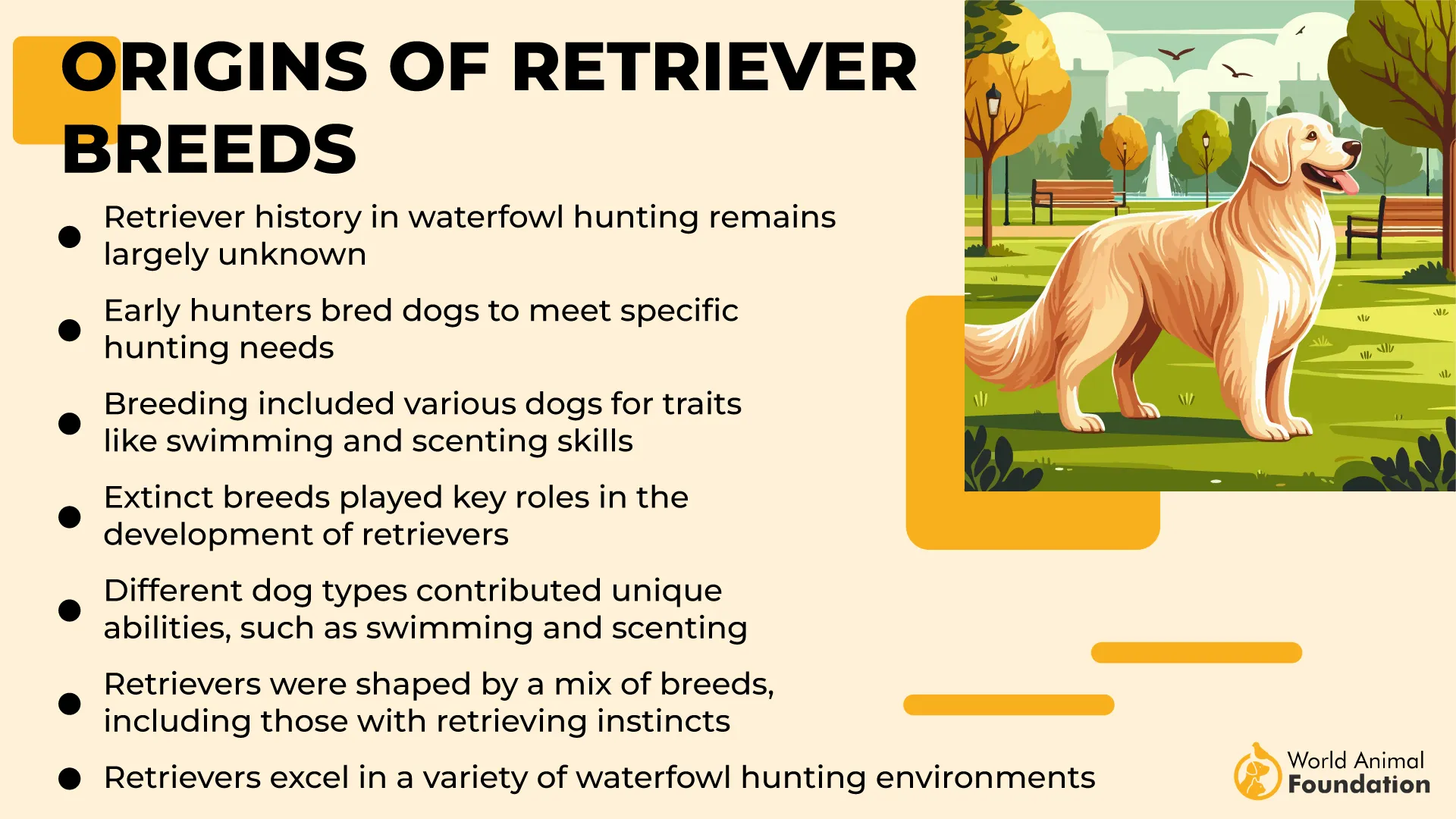
They’re insanely quick in the field, but what really stands out is their smooth, ground-covering gait. Flat-Coats move with such grace and purpose that it’s almost hypnotic to watch them sweep through terrain with that classic tail-wagging swagger.
But they aren’t just about the physical stuff. Omlet says that Flat-Coats are known for their intelligence and problem-solving skills. Whether it’s marking a downed bird across a pond or navigating tough terrain to make a clean retrieve, they think on the fly—and they love the challenge.
Have you ever seen a dog get excited to train? That’s the Flat-Coat. They thrive on learning and perform best when training feels like a game. You give them variety and a bit of fun, and they’ll give you near-flawless execution in return. No dragging their paws here.
One thing that really makes this breed unique? Their emotional sensitivity. Flat-Coats are extremely people-oriented, and they bond deeply with their handler. They respond better to encouragement than correction, and if you raise your voice, expect an apologetic look that’ll break your heart.
Fun Fact:
Flat-Coated Retrievers mature slowly and often keep their puppy-like behavior well into adulthood—some owners say they stay goofy for life!
5. German Wirehaired Pointer
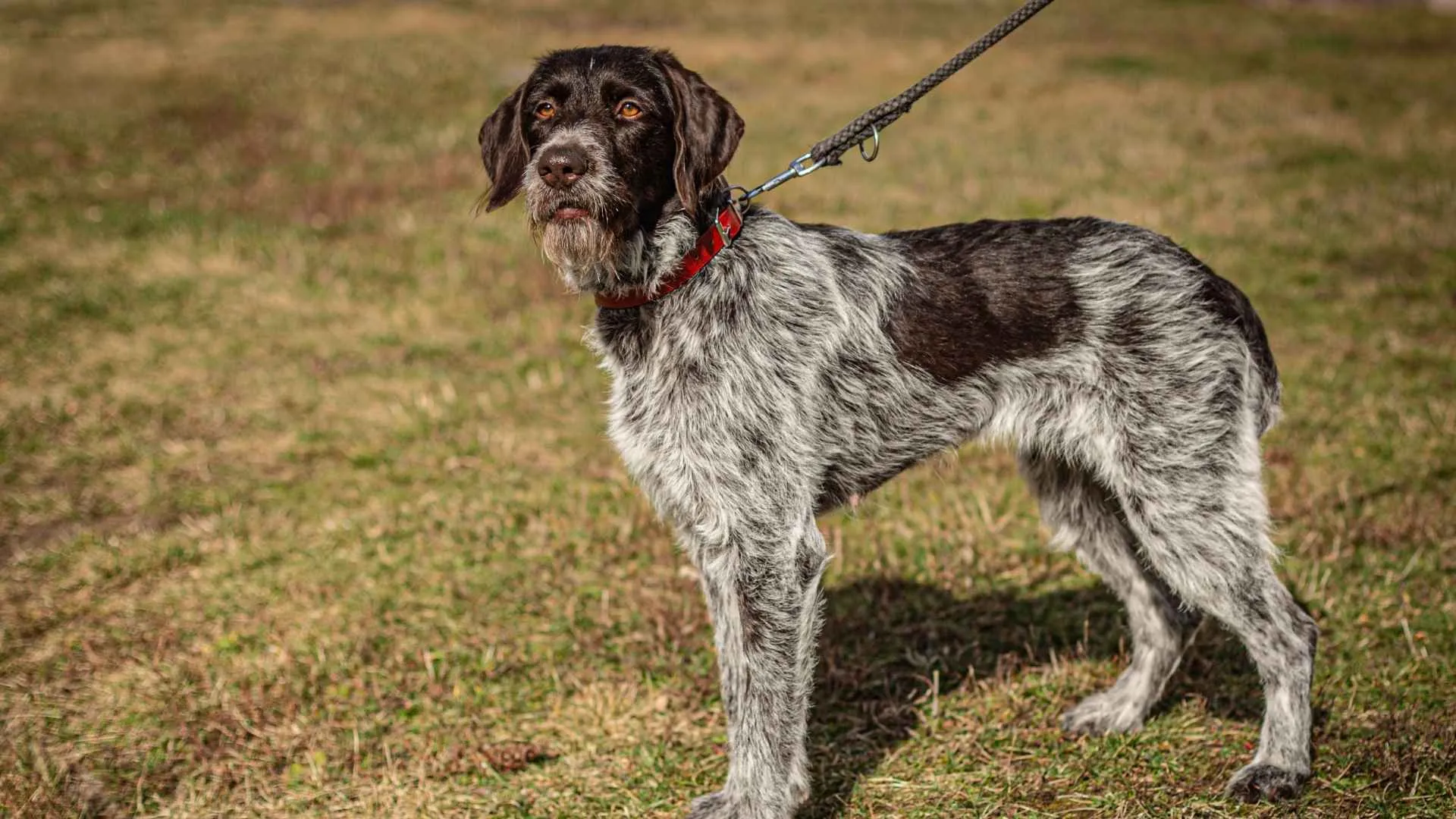
The German Wirehaired Pointer is like a rugged, all-terrain athlete—tough, strong, versatile, and built to handle just about anything the field throws at them. With that wiry coat and intense gaze, they look ready for action 24/7—and honestly, they are.
Their signature rough coat isn’t just for style. It’s dense, weather-resistant, and practically armor in heavy cover. Thorns, burrs, and cold water are barely a speed bump. That coat lets them charge into brambles or icy marshes like it’s no big deal.
What’s wild about GWPs is their work ethic. These dogs live to hunt and will go all day without quitting. They have an unmatched level of focus and determination in the field. If you want a dog that doesn’t back down or burn out, this is your guy.
They’re also incredibly intelligent—almost to the point of being crafty. You can’t just throw repetitive drills at a GWP and expect them to stay engaged. They need challenges, variety, and purpose. Training has to be interactive, or you’ll get that classic “I’m over this” stare.
Their drive to work is matched by their loyalty. GWPs tend to form deep bonds with one person and become fiercely devoted. They want to work with you, not just for you. That tight-knit connection makes them amazing teammates in the field.
WebMD states that at home, they’re usually calm and affectionate dogs—but only if their energy tank is emptied first. A bored GWP can become destructive or territorial. They need structure, exercise, and a clear job to do, even in daily life. Think “athlete in the off-season”—still needs a regimen.
Fun Fact:
The German Wirehaired Pointer’s coat includes a beard and bushy eyebrows—not just for looks, but to protect their face from thorns and harsh weather while working!
6. German Shorthaired Pointer
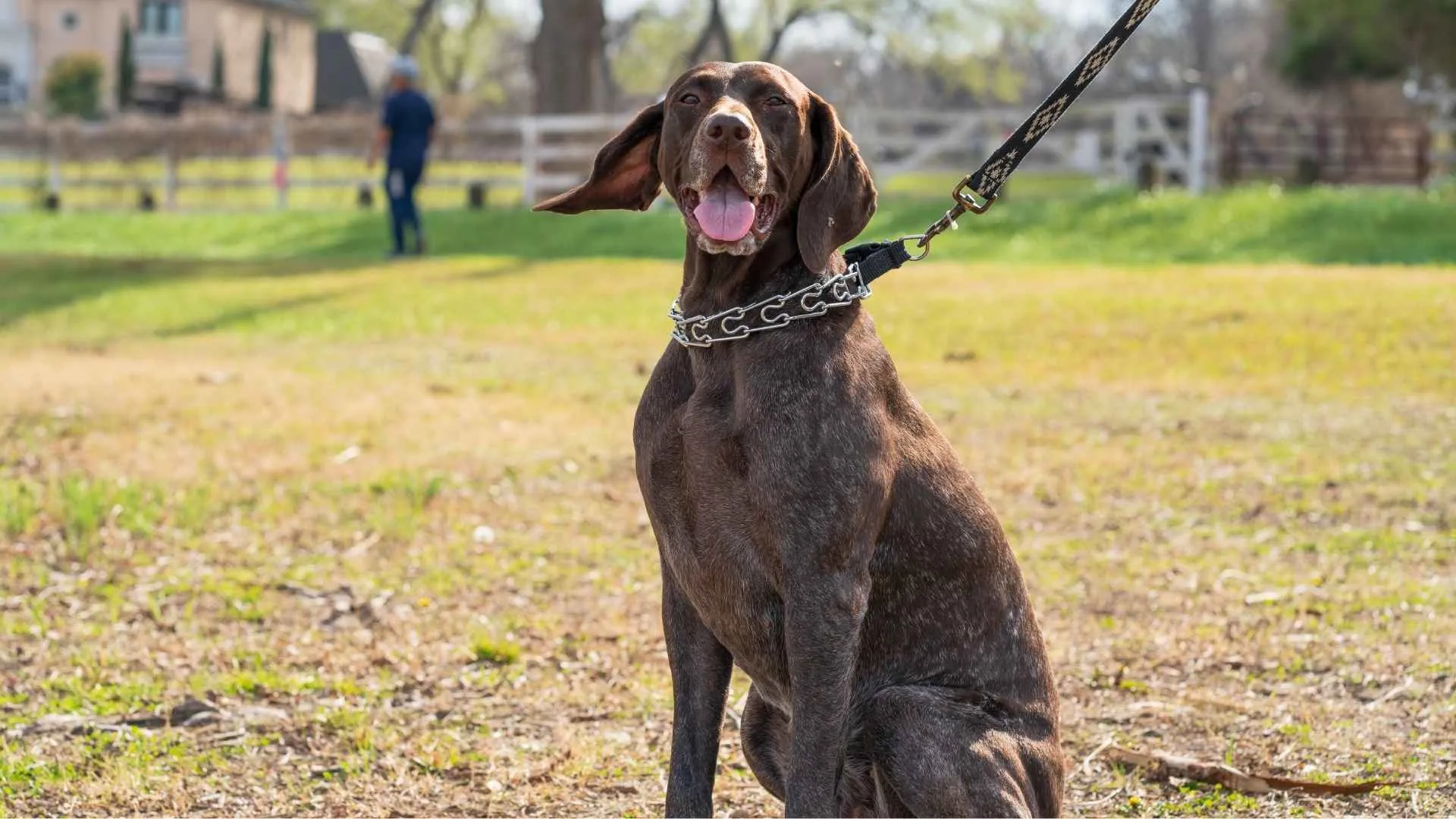
The German Shorthaired Pointer is the epitome of versatility in the dog world. With a sleek, athletic frame and boundless energy, this dog was born to perform—whether it’s pointing upland game, retrieving from water, or simply joining you on a run. If there’s a task, you can bet this dog is ready to crush it.
Bred in Germany in the early 1900s to be an all-in-one hunting companion, the GSP combines the best traits of pointers, retrievers, and even hounds. They’re excellent in the field, whether you’re tracking, pointing, or making long-distance retrieves. It’s that innate ability to adapt to different terrains that sets them apart.
GSPs stand out because of their speed and endurance. These dogs can cover a vast area in no time, all while maintaining focus and precision. Their long legs and graceful strides make them built for speed, and they’ll run for hours without tiring. If you’re the kind of person who loves long hikes or fieldwork that pushes the limits, a GSP can easily keep pace.
They’re also incredibly driven and highly energetic. These dogs need a job, or they’ll find one on their own—probably something a little too creative for your liking. Give them work, and they’ll give you everything they’ve got. But, without that mental and physical challenge, you might find them a little… boisterous.
These dogs aren’t the best fit for couch potatoes. A quick jog around the block isn’t going to cut it. GSPs need at least an hour or two of exercise a day to stay happy and healthy. If you enjoy running, hiking, or biking, they’ll be your perfect companion.
Lastly, their coat is short, sleek, and low-maintenance. It might seem too good to be true for such a high-energy breed, but a quick brush now and then keeps them looking sharp. They don’t shed too much, but they can still leave a trail of fur after a long day of running through the brush.
Fun Fact:
The German Shorthaired Pointer is known for its “perfect pointer stance”—when they lock onto a scent, they’ll stand completely still, pointing with one front leg raised. It’s like a statue in motion!
7. Chesapeake Bay Retriever
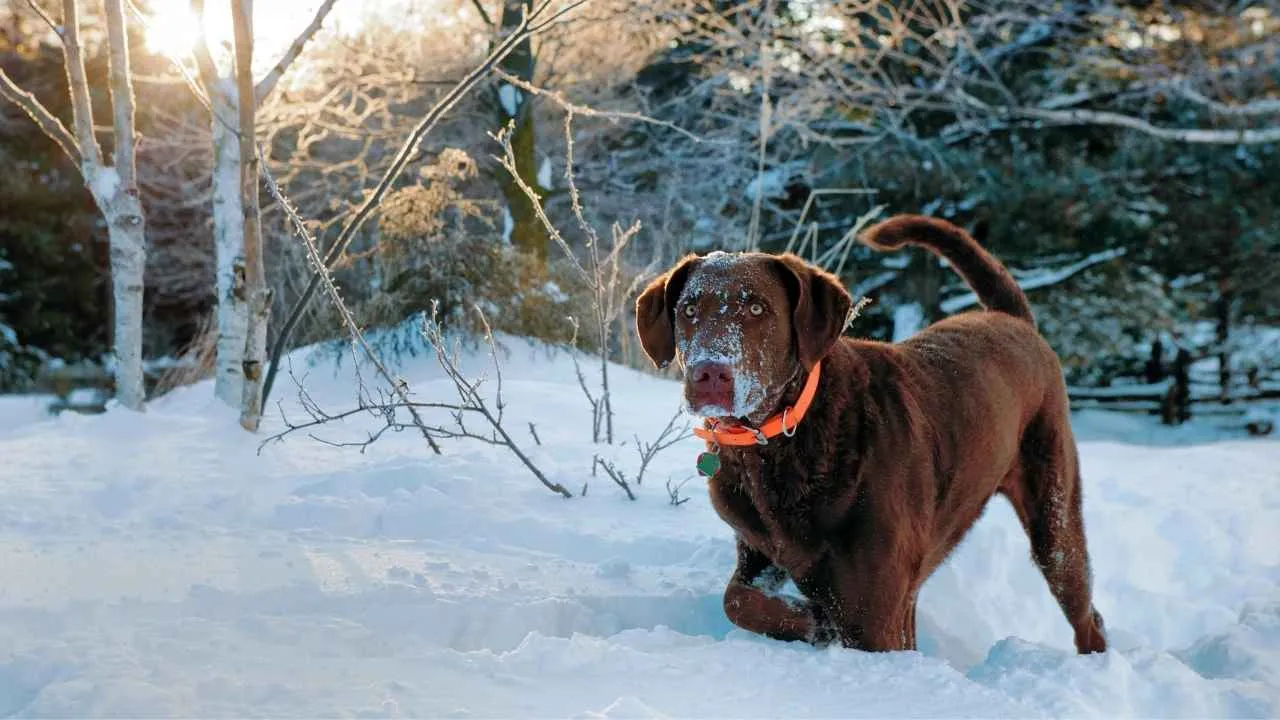
The Chesapeake Bay Retriever is the ultimate water dog—tough, relentless, and incredibly skilled when it comes to retrieving game from water. With a thick, oily coat that repels water and a strong, muscular build, these dogs were designed to tackle the most challenging hunting environments.
Known for their incredible stamina, the Chesapeake Bay Retriever can work for hours in freezing cold waters, making them the go-to dog for waterfowl hunters. Whether it’s retrieving ducks from a frigid lake or navigating dense marshland, they’re right at home. Their webbed feet and powerful, athletic bodies make them built for this kind of work.
They are famous for their sheer determination and independence, says VCA. While many retrievers are eager to please, the Chesapeake tends to have a more “thinking dog” approach. They’ll get the job done even if they have to figure it out themselves, making them highly resourceful when hunting in challenging conditions.
These dogs are also known for their strong scenting ability. While they’re excellent at retrieving, their nose is just as sharp when it comes to tracking. Whether it’s a downed bird or tracking through the brush, a Chesapeake is going to find it. Their keen nose allows them to work independently in the field, often without constant direction.
Despite their strong work ethic, Chesapeake Bay Retrievers need plenty of mental and physical stimulation. They can get bored easily if not given a job to do, and that’s when they might develop bad habits. Regular exercise is a must, and they thrive when given tasks that allow them to use their brains and brawn. Want a partner for long walks, jogs, or water sports? The Chesapeake is all in.
Fun Fact:
The Chesapeake Bay Retriever is known for its love of the water, but they have an interesting trick: their thick double coat actually helps them float in water, allowing them to stay on top even in cold, fast-moving currents!
Conclusion
Active sporting dog breeds are more than just energetic companions—they’re intelligent, eager, and built for action. Originally bred to retrieve game, herd sheep, or assist hunters in the field, these dogs thrive on consistent training, invigorating exercise, and close relationships with humans. From swimming and hiking to agility competitions and field trials, sporting dogs are perfectly suited for outdoor activities that demand athleticism, sharp instincts, and superior temperament.
Whether you’re drawn to the loyal Labrador Retriever, the lively English Springer Spaniel, or even a sleek Greyhound with boundless energy, there’s a member of the sporting group ready to match your active lifestyle. These affectionate family pets are also excellent companions for active owners and individuals who enjoy long walks, running, or mentally stimulating tasks like puzzle toys. Their naturally active personalities and high exercise requirements make them ideal for those who want more than just a pet—they want a partner in adventure.
Recognized by the American Kennel Club (AKC) and admired for their versatility, these sporting breeds are some of the most highly trainable and essential dogs for people who love to work closely with their canine friends. They’re alert, healthy, and fun-loving dogs that excel not only in hunting and rescue but also in canine sports and group-based training. Active breeds are not just for the field—they’re loyal, affectionate, and make exceptional family dogs that bring energy, love, and purpose into everyday life.


